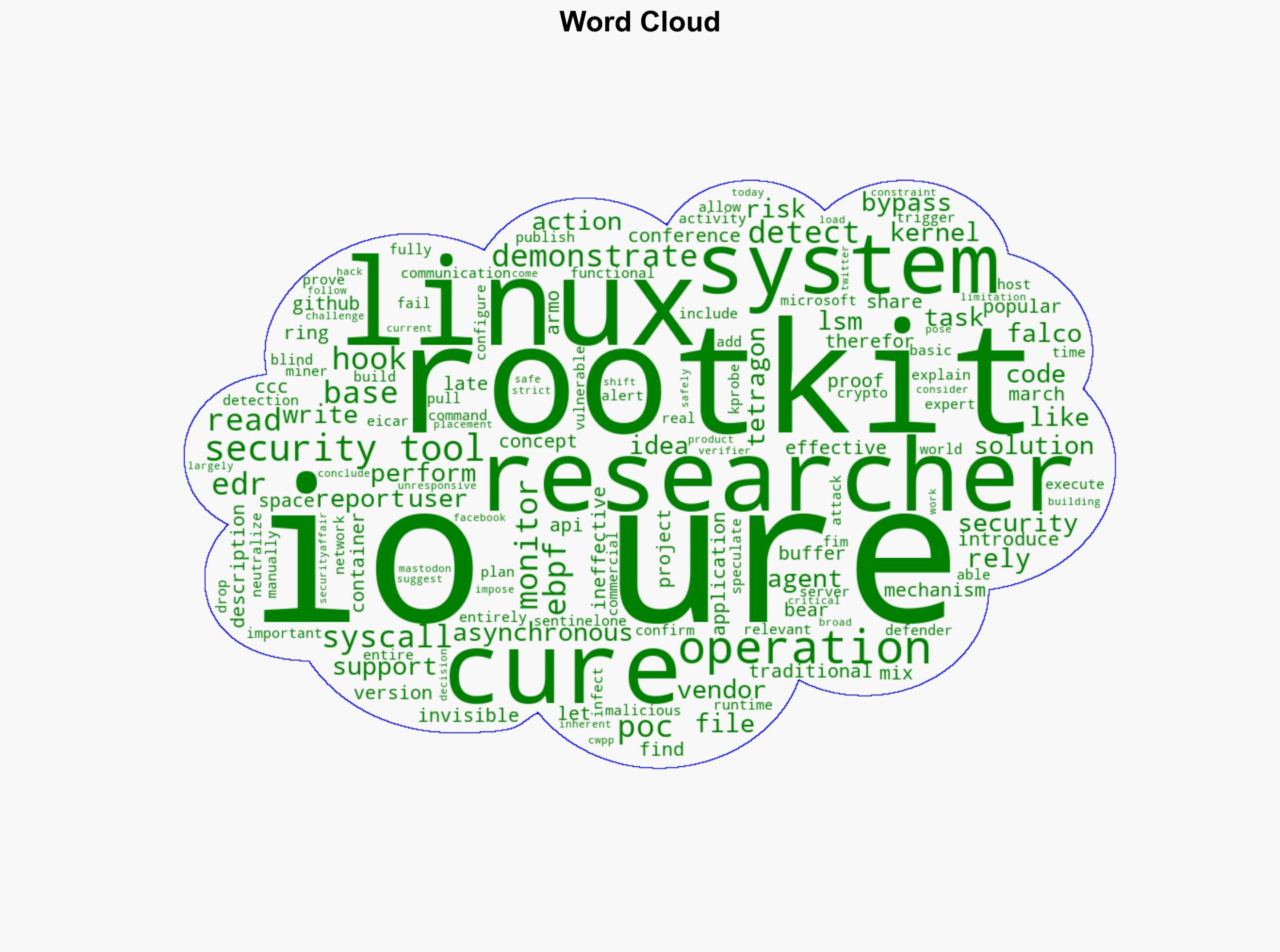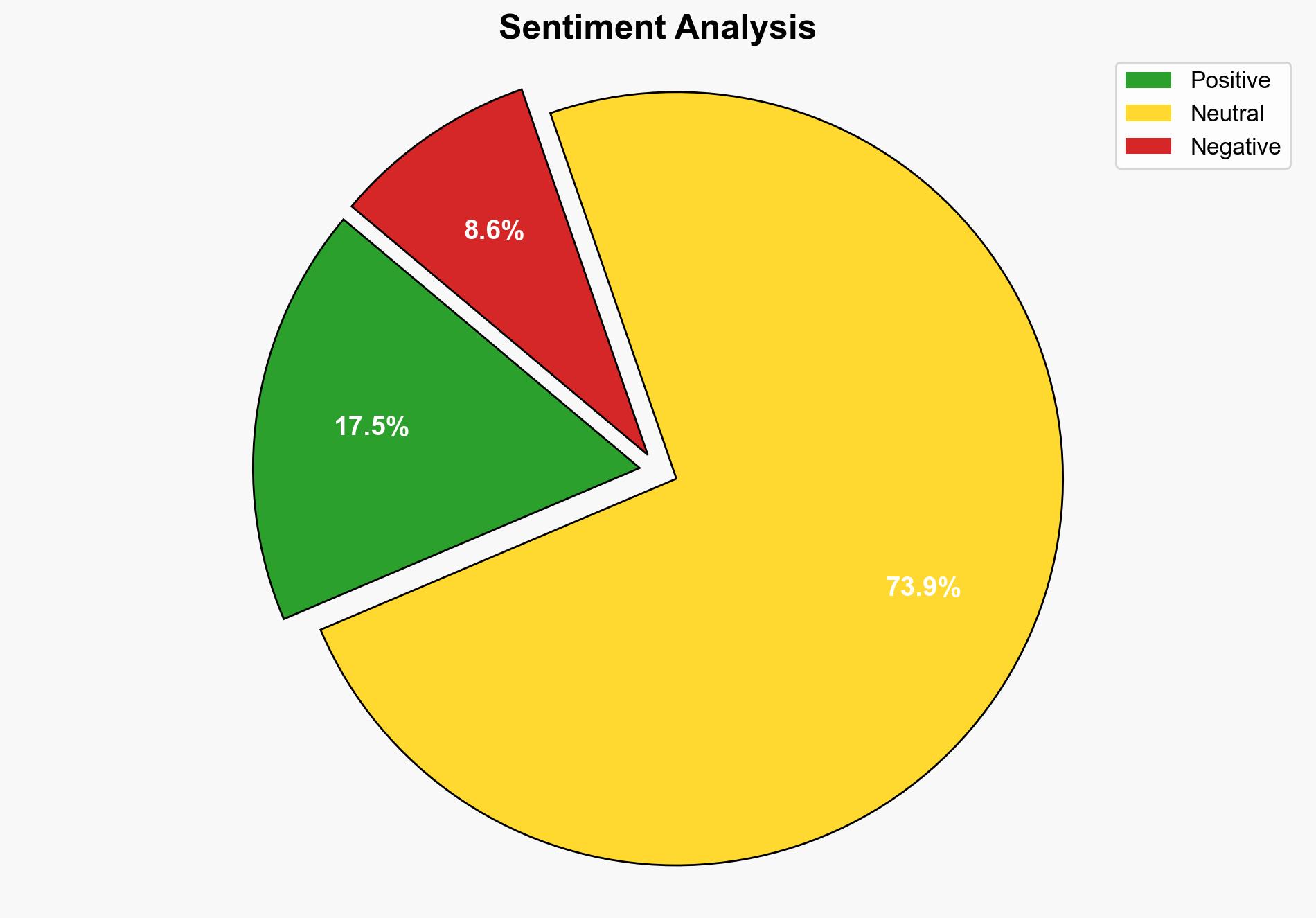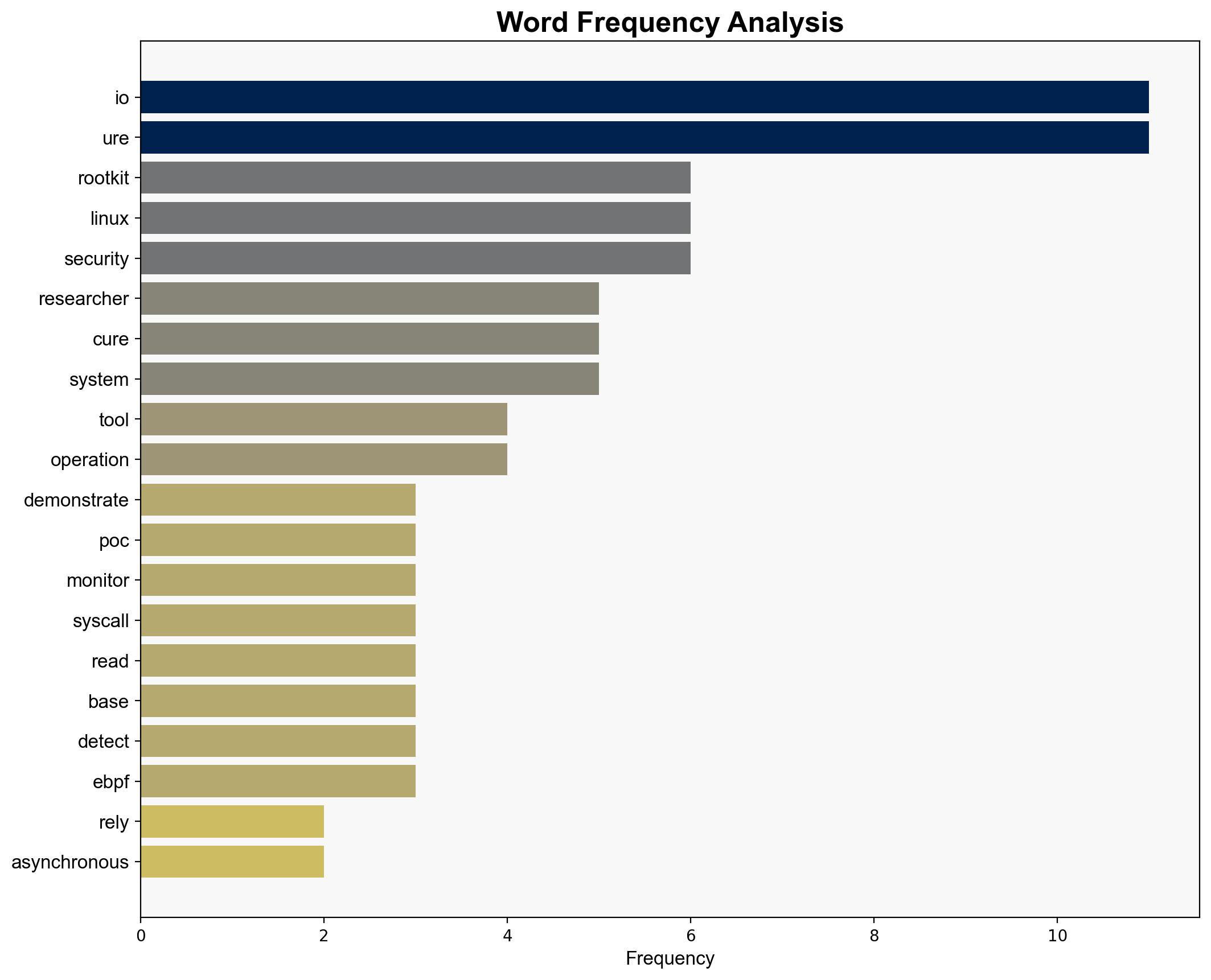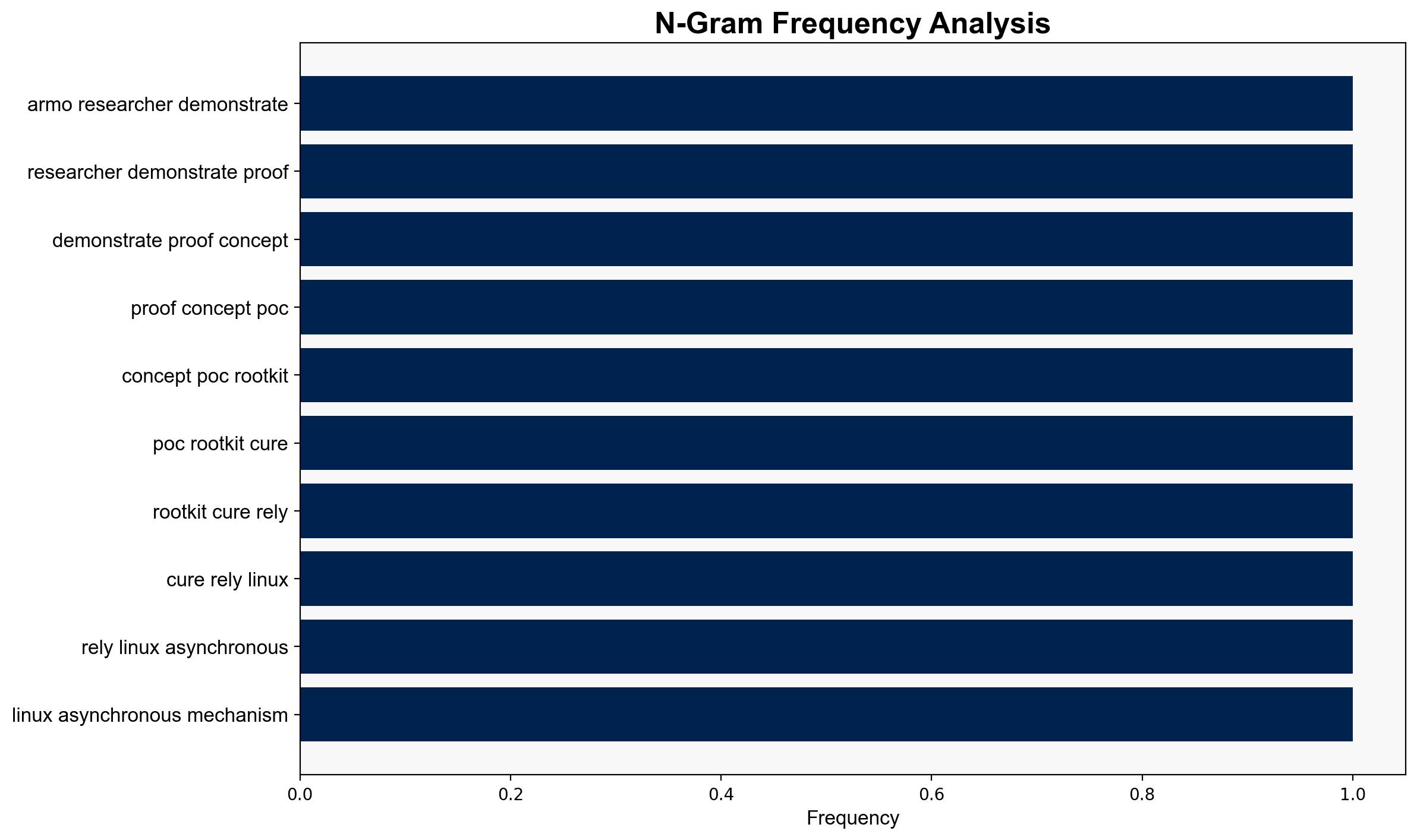PoC rootkit Curing evades traditional Linux detection systems – Securityaffairs.com
Published on: 2025-04-28
Intelligence Report: PoC rootkit Curing evades traditional Linux detection systems – Securityaffairs.com
1. BLUF (Bottom Line Up Front)
The recent demonstration of the PoC rootkit named “Curing” highlights a significant vulnerability in Linux systems, exploiting the IO_uring API to bypass traditional detection mechanisms. This development poses a substantial risk to current Linux security solutions, necessitating immediate attention and adaptation by cybersecurity vendors and practitioners.
2. Detailed Analysis
The following structured analytic techniques have been applied to ensure methodological consistency:
Analysis of Competing Hypotheses (ACH)
The primary hypothesis is that the “Curing” rootkit’s reliance on the IO_uring API is a novel method that current Linux security tools are not equipped to detect. Alternative hypotheses, such as misconfiguration or outdated security tools, were tested and found less plausible given the rootkit’s design and capabilities.
SWOT Analysis
Strengths: The rootkit’s use of asynchronous IO operations makes it highly effective at evading detection.
Weaknesses: Limited to systems with IO_uring support.
Opportunities: Development of new detection methods leveraging eBPF and LSM hooks.
Threats: Potential widespread adoption of similar techniques by malicious actors.
Indicators Development
Key indicators include unusual IO_uring activity, unexpected system call patterns, and communication with known malicious servers. Monitoring these can help in early detection of similar threats.
3. Implications and Strategic Risks
The emergence of the “Curing” rootkit underscores a critical gap in current Linux security frameworks, particularly those relying on syscall-based monitoring. This vulnerability could lead to increased cyber espionage and data breaches if not promptly addressed. The systemic risk is compounded by the potential for rapid adaptation and deployment by cybercriminals.
4. Recommendations and Outlook
- Develop and deploy eBPF-based detection agents to monitor IO_uring activities.
- Enhance Linux EDR solutions with LSM hook support for comprehensive syscall monitoring.
- Scenario Projections:
- Best Case: Rapid adaptation by security vendors mitigates the threat.
- Worst Case: Widespread exploitation leading to significant data breaches.
- Most Likely: Gradual improvement in detection capabilities with isolated incidents.
5. Key Individuals and Entities
The report references the work of an unnamed researcher who demonstrated the rootkit’s capabilities.
6. Thematic Tags
(‘national security threats, cybersecurity, Linux vulnerabilities, rootkit detection, IO_uring API’)




